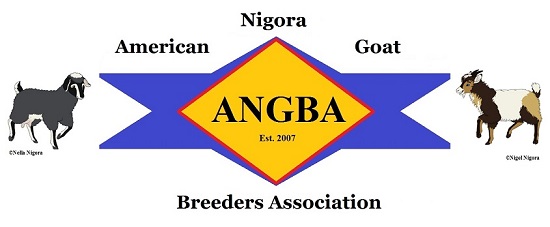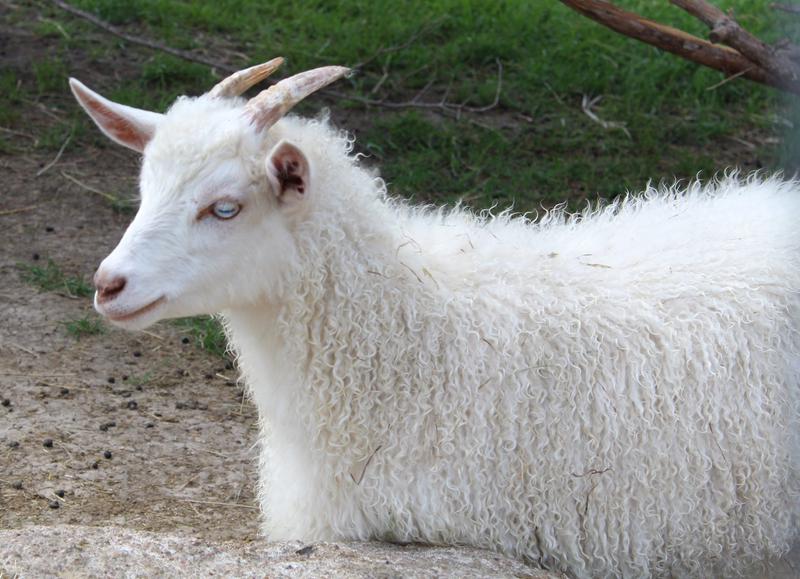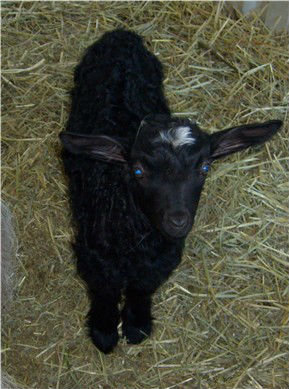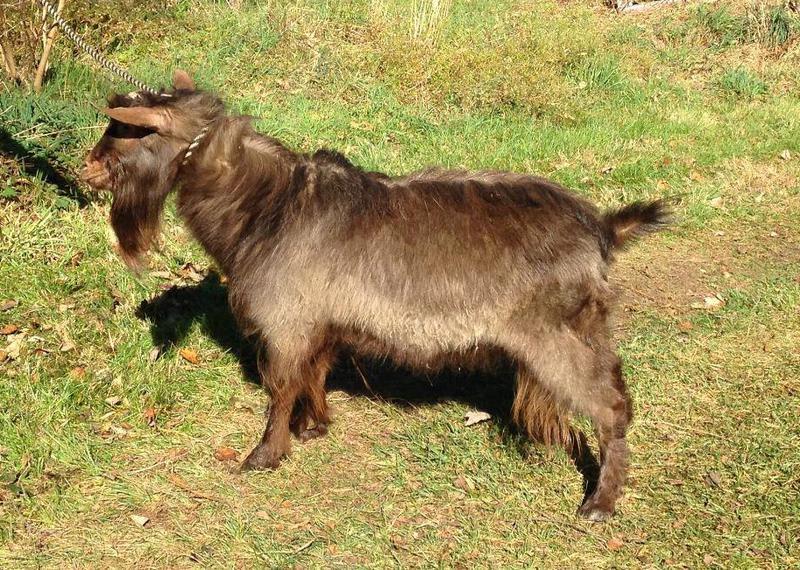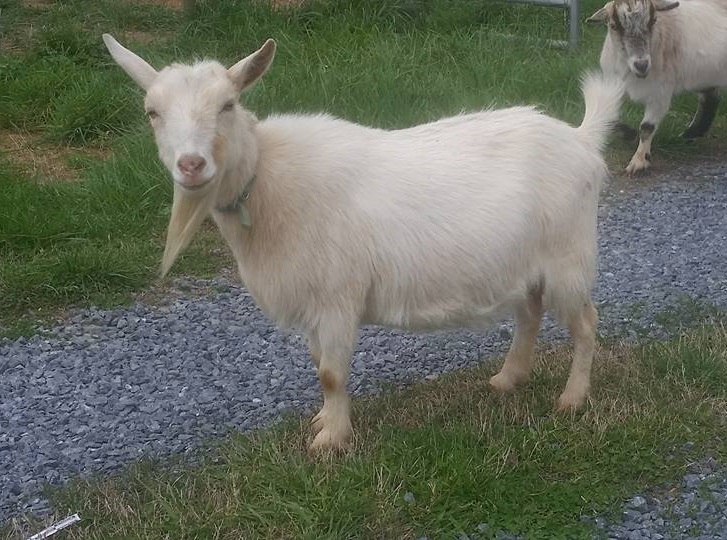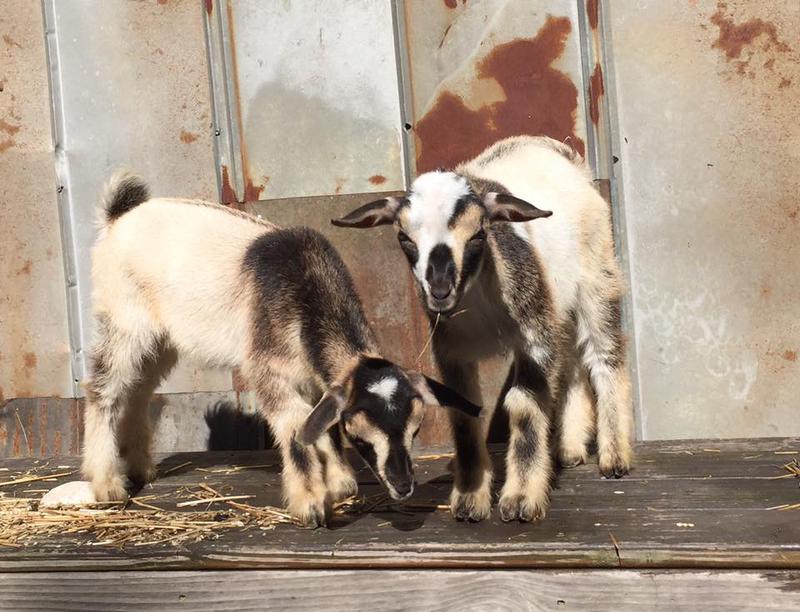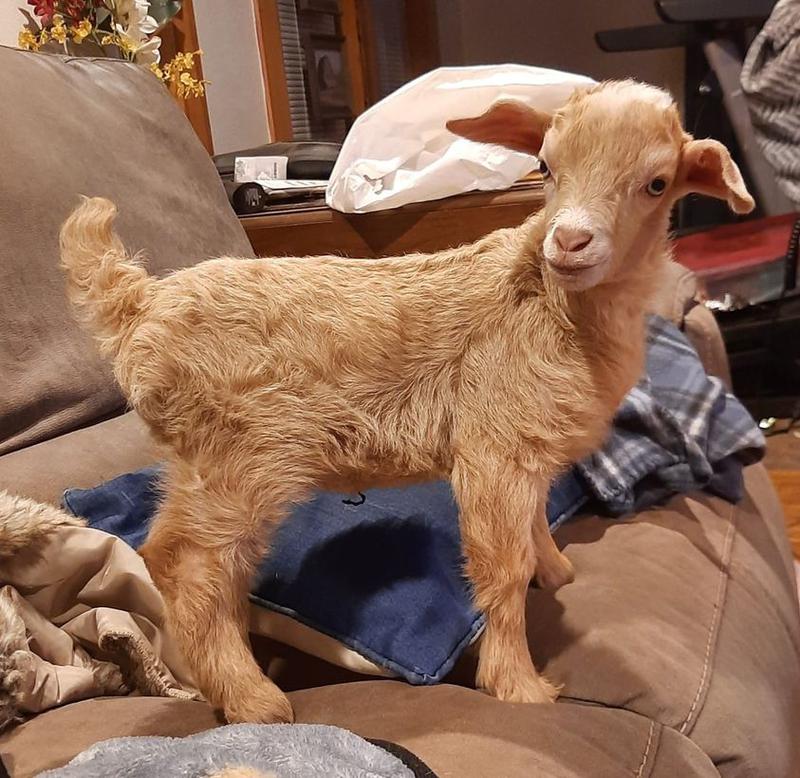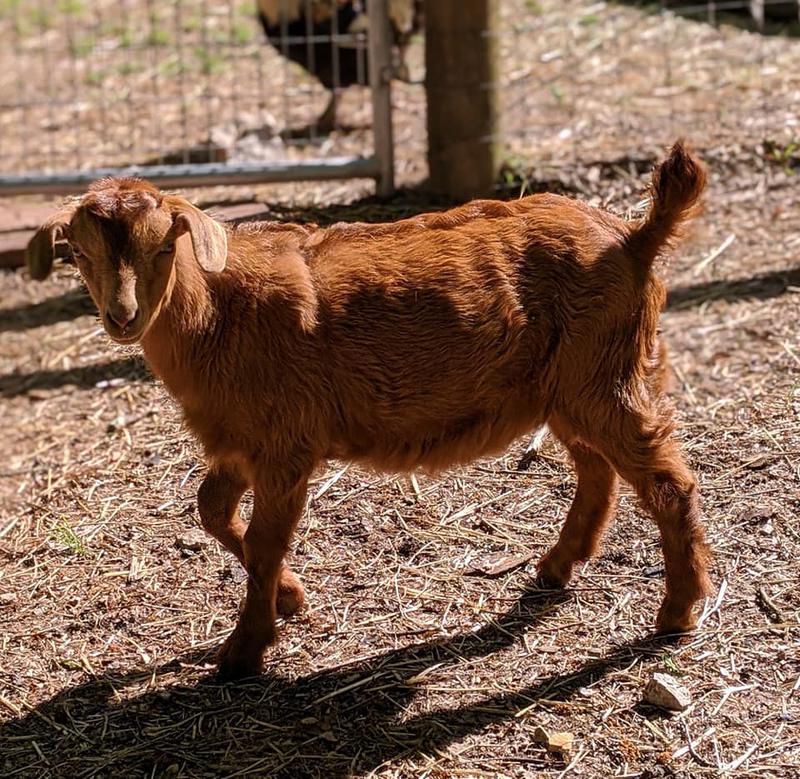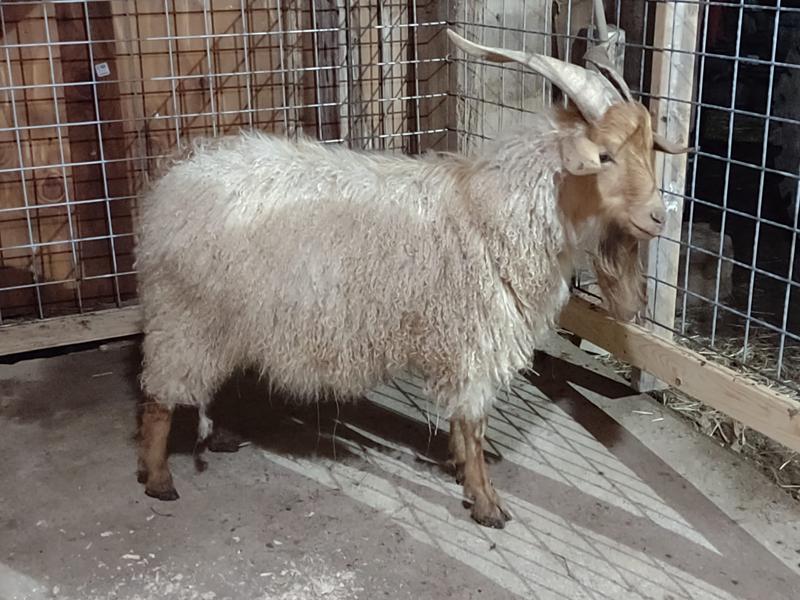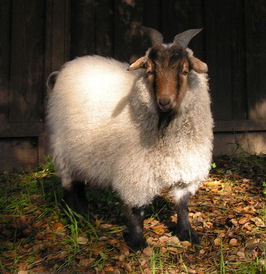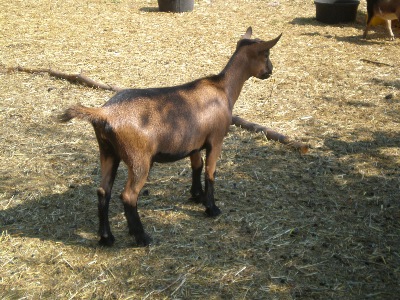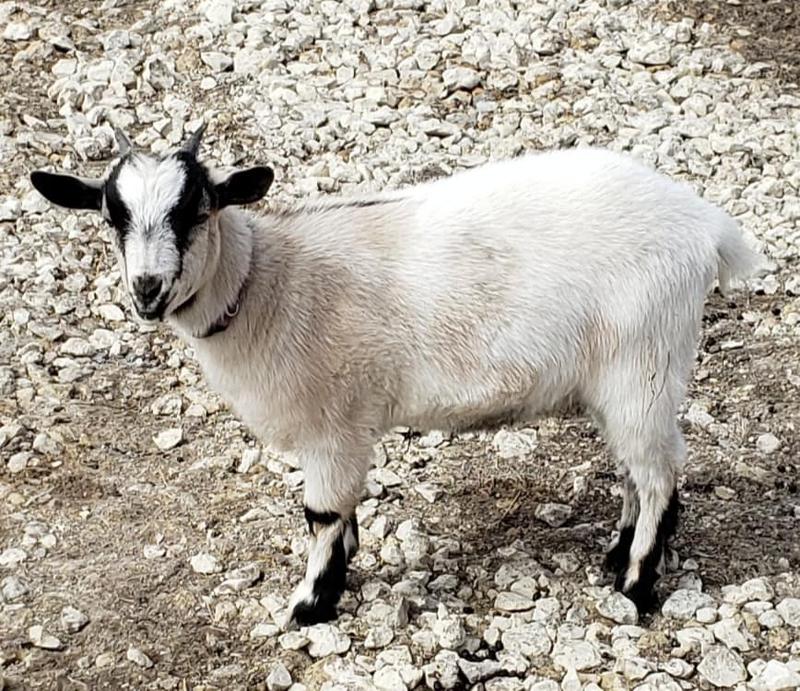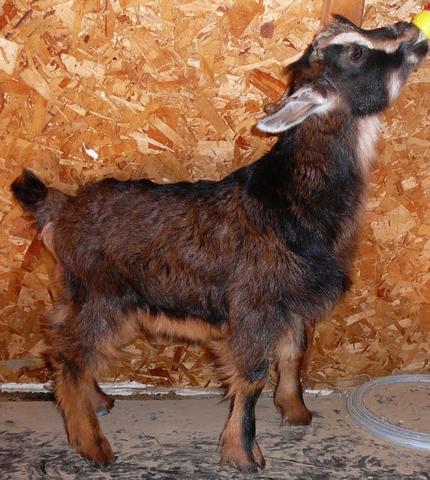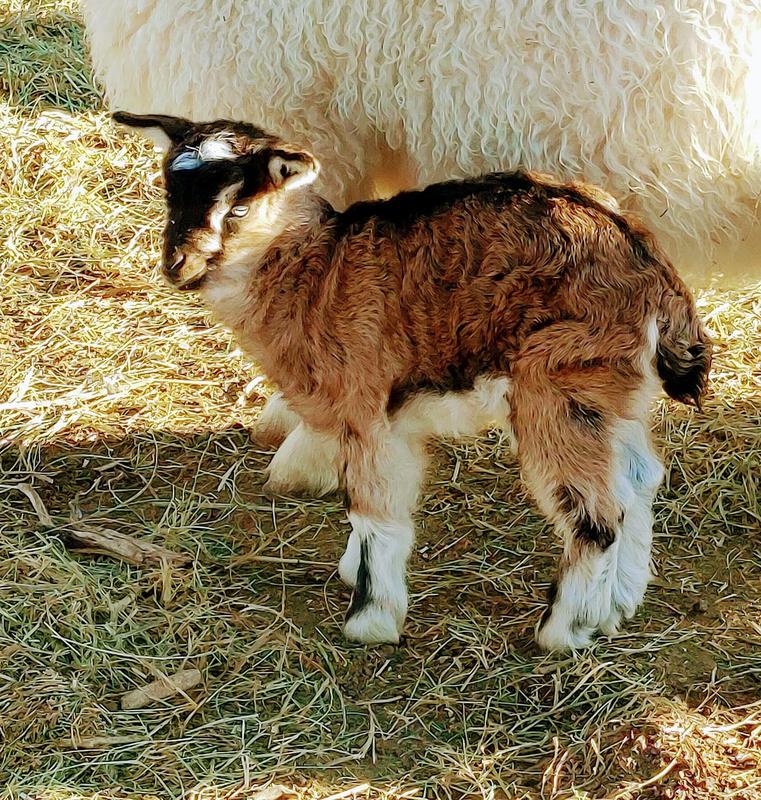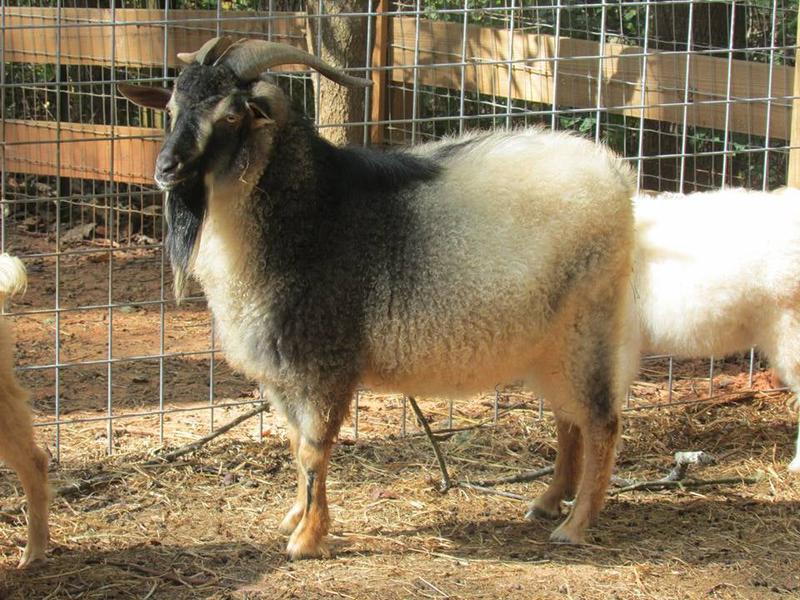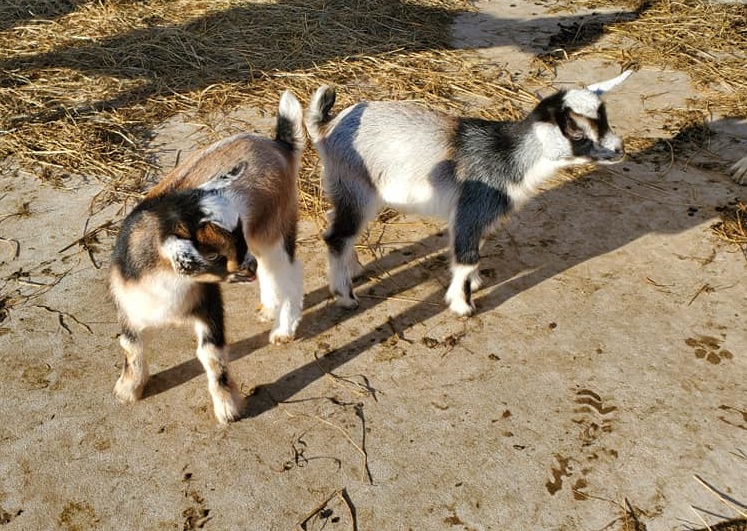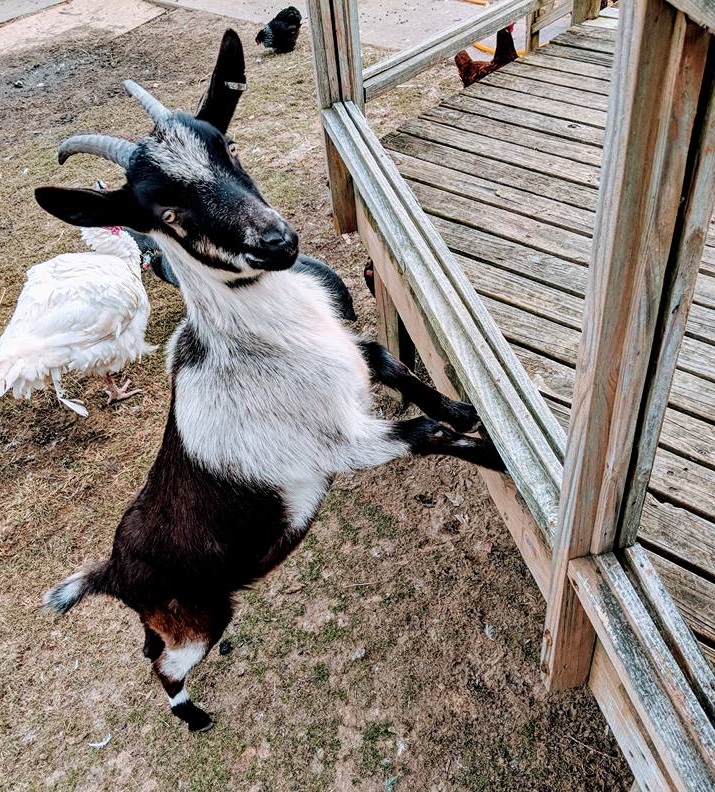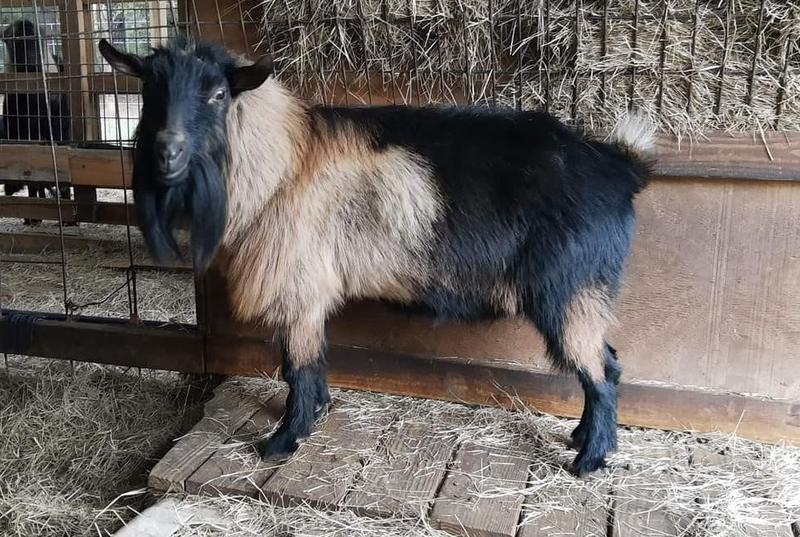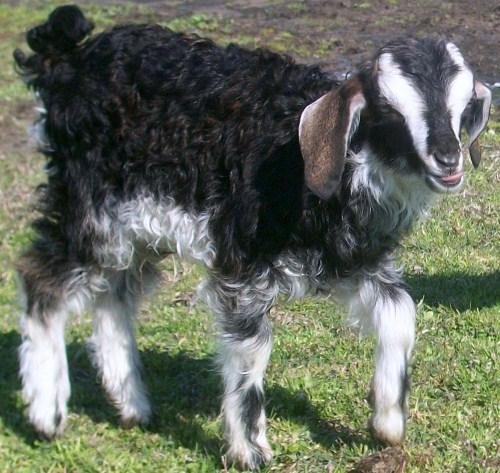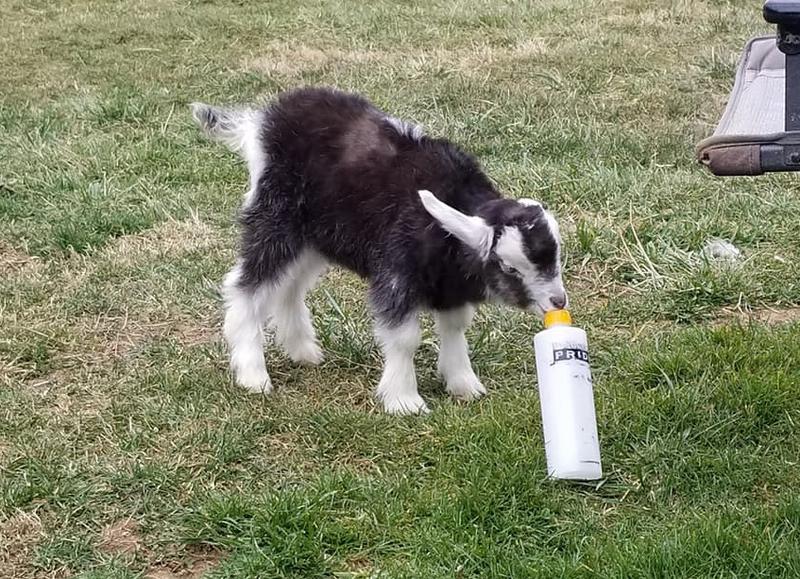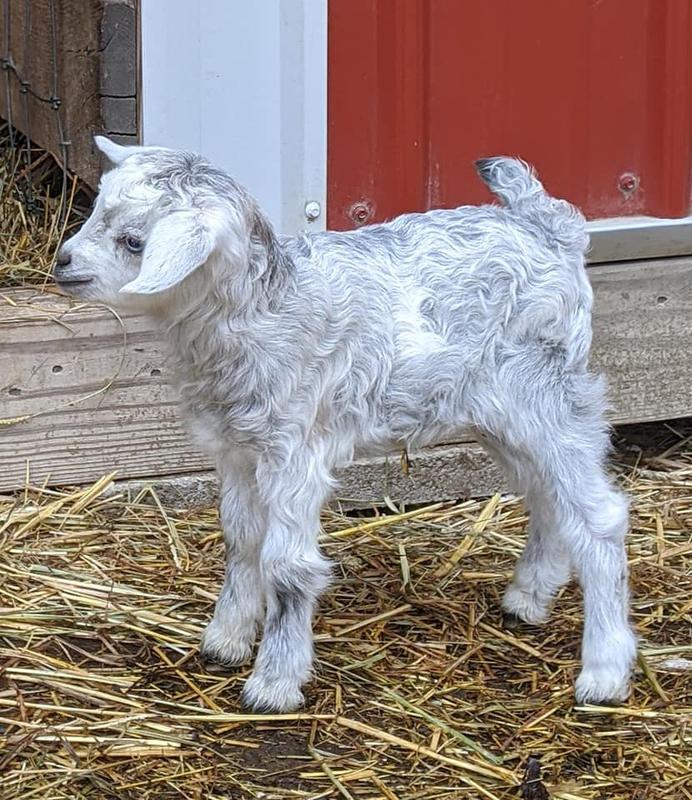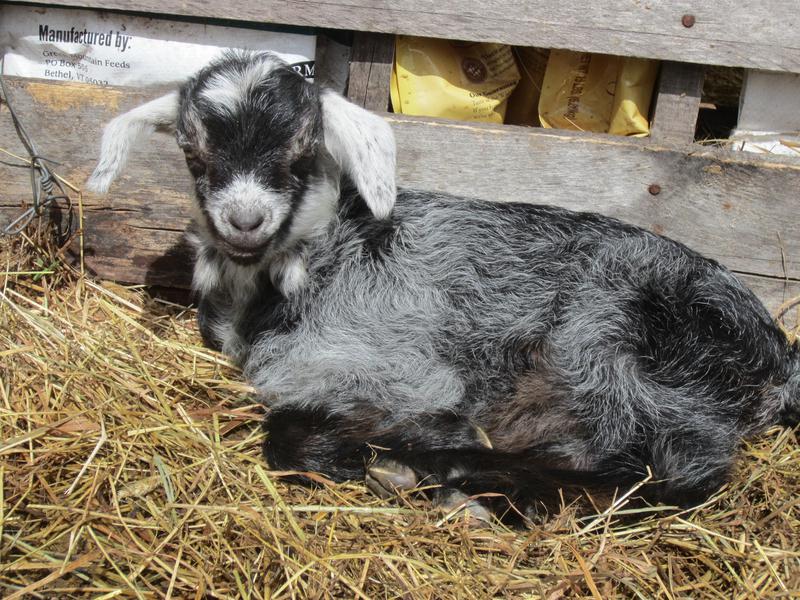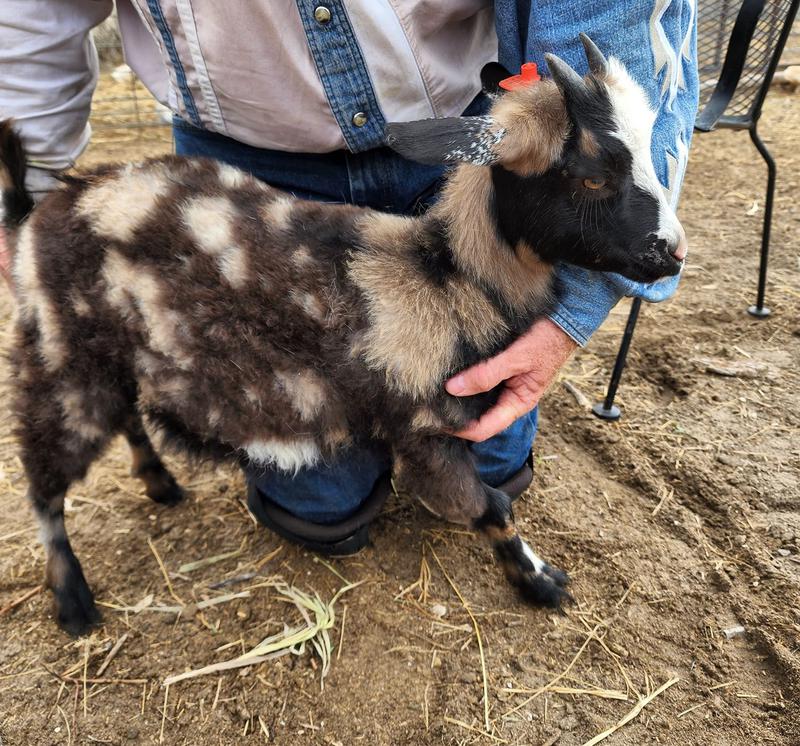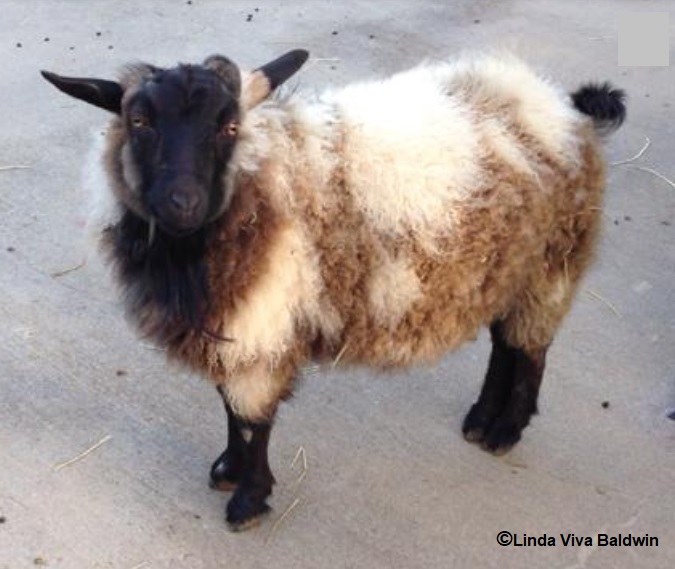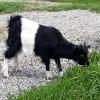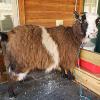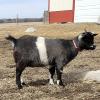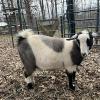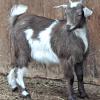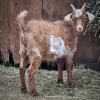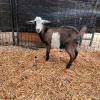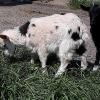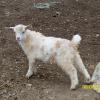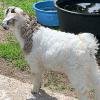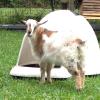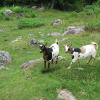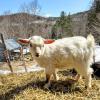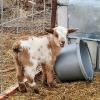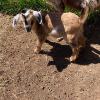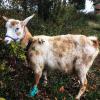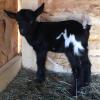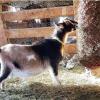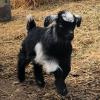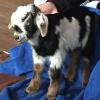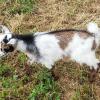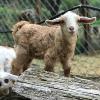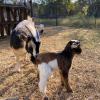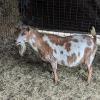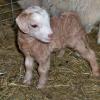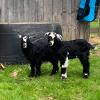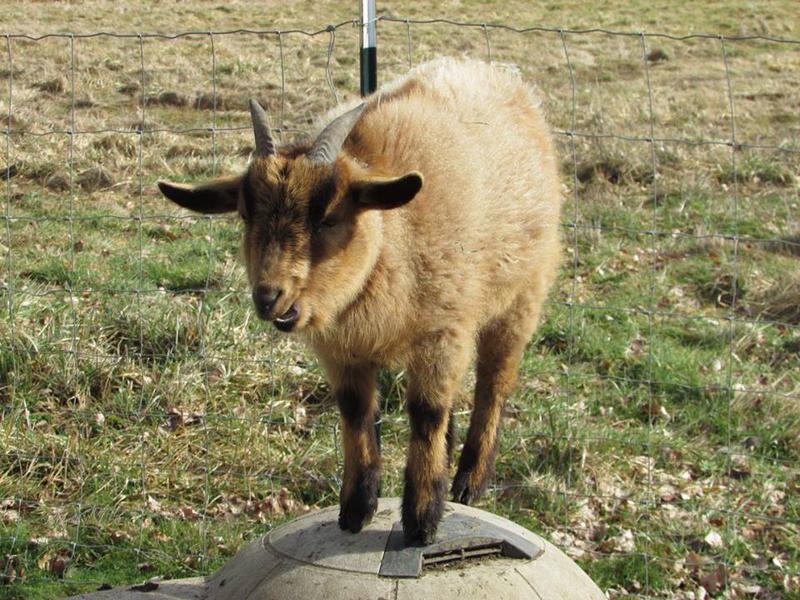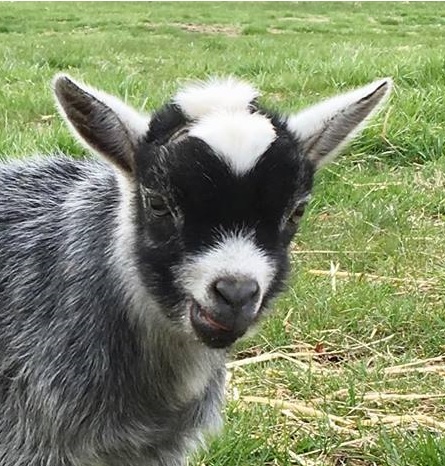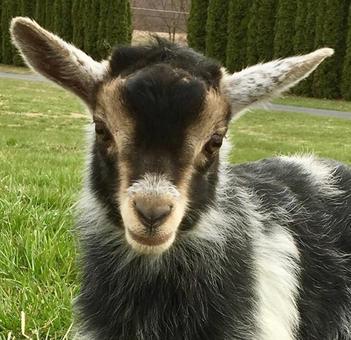BASE COLORS: Note that fleece color may be lighter or a different shade/color than the hair coat color. Birth color/hue and patterning may also change as a kid matures.
-White: White to very pale/nearly white cream colored hair and fleece; may have pink skin
or dark skin.
-Black: Jet black to flat black/dark charcoal. Black mixed with dark reddish brown hairs is known as "Maroon".
-Brown/Chocolate: Hues include dark brown (almost black), chocolate (medium brown), light chocolate, silvery-brown/taupe. May have slightly darker points/accent markings. Some shades of brown may crossover with red and gold.
-Cream: Ranges from pale but distinctive cream, to French vanilla or buff color.
-Tan: Ranges from a light sandy to dark Khaki or reddish-tan shade. Often the lighter
color/shade of a patterned goat, like Buckskin or Sundgau. (Buckskin kids shown).
-Gold: Ranges from pale, to medium, to deep golden yellow-orange, similar to Palomino. Chocolate-Gold is gold with a brownish hue or vice versa. Red-Gold is red with a golden
orange hue.
-Red: Ranges from light to deep rich dark red. Chocolate-Red is red with a light brownish hue or vice versa. Bay is a deep rich reddish brown found on classic dark Oberhasli goats.
PATTERNS: Nigoras may be a combination of different patterns or have dilutions and genetic modifiers, which can make it very difficult to determine just which color/patterns they are! An educated guess is often the best bet when describing your goat for recording/ID purposes.
-Solid: Any non-patterned self-color. May have slightly darker shading at the points.
-Chamoisee: (Base is light tan through red bay, markings are black or dark brown face stripes/mask, legs, dorsal stripe, belly)
-Caramel: (Base is white to dark tan or gold with partial dark dorsal stripe, face stripes/mask, partial dark belly, and legs that are dark behind with light fronts)
-Bezoar: (Similar to Chamoisee but with martingale, pale belly with demarcation stripe, face stripes, and striped legs)
-Buckskin: (Base is light to dark tan, mantle and other markings are black, dark brown, red; may be roaned. Legs and face are striped)
-Cou Blanc: (Opposite of buckskin pattern; white front half, black back half/cape and markings)
-Cou Clair: (Like Cou Blanc but with a cream or tan front half and black back half/cape and markings)
-Two-Tone Chamoisee: (Similar to the Cou patterns but pale front half and brown or red back half/cape, markings dark brown or black)
-Swiss/Sundgau: (Base color is generally black, brown, or red, may be roaned, offset by white or tan markings consisting of stripes or eyebrow marks on the face, legs (which may have black stripes down the front) rump, under tail, inside ears, and may include a pale belly or throat patch. Swiss generally have a dark belly and all white legs while Sundgau have a light belly and light legs with dark stripes down the front).
-Silver: (White with mixture of dark hairs through the coat; body, legs and face are the same color. Sometimes referred to as blue)
-Roan: (Dark coat with mixture of light-colored hairs through the coat; face and legs commonly darker than body. Known as agouti in Pygora and Pygmy)
-Moon Spotted: (Any base color other than white with lighter or darker round patches or spots of varying size and amount)
-Ticked/Ticking: (Dark flecks/groups of hairs of any color within a lighter coat or white markings)
WHITE MARKINGS:
May show maximum expression (goat is almost completely white but for a tiny spot of color) or minimal expression (colored goat may have one small spot of white on the body).
-Belted: (A white belt that goes entirely or mostly around the middle of the animal; may express as a single patch or be so extensive that the goat is essentially white with a dark head and tail and legs)
-Broken Belt: (a partial belt that is incomplete but generally on both sides of the goat)
-Pinto/Splashed White/White Overlay/Random White Markings: (Interchangeable terms, a pinto may best be described as a mostly white goat that appears to have spots of any color. A splashed white is the opposite, where a goat is mostly dark but has white patches of color. White Overlay may describe a goat that's base color/pattern is mostly obscured with large amounts of white. Random White Markings can cover the legs and face).
-White poll: (White spot on top of the head)
-Frosted muzzle and ears: (White speckling on ears and muzzle)
COLORS AND PATTERNS OF THE NIGORA GOAT
NEED PHOTO!
NEED PHOTO!
(Photos from current or former American Nigora Goat Enthusiasts Facebook Group members.
Copyright to their respective photographers)
MAINTENANCE MODE
